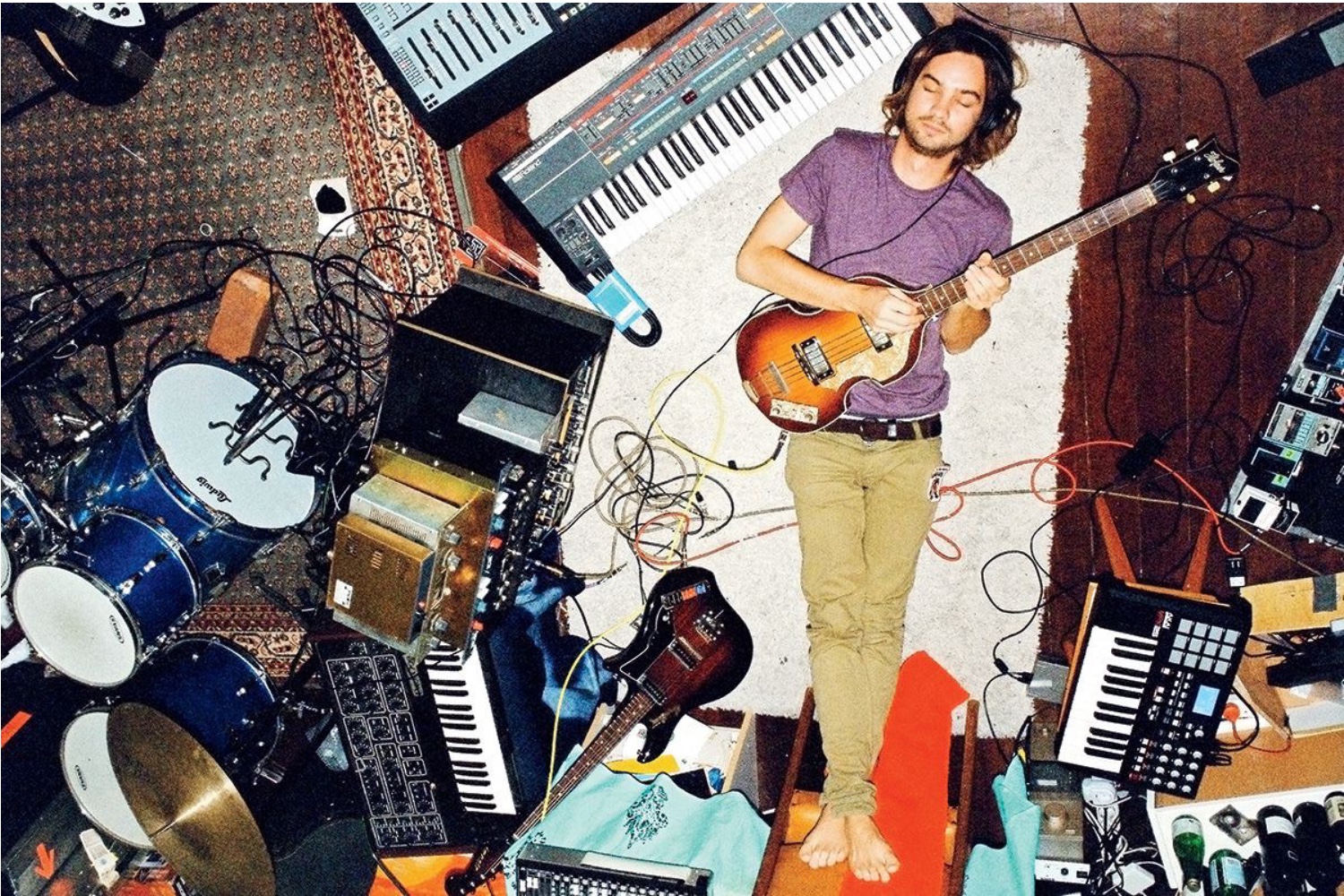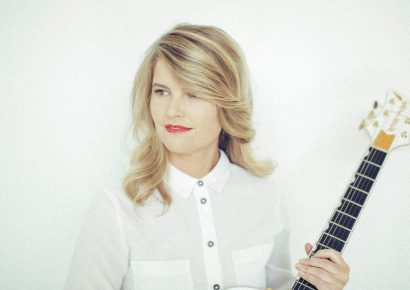Featuring Vanda & Young, Mark Opitz, Kevin Parker & more
It’s easy to obsess over the efforts of the unsung heroes of the Australian music industry – let’s face it, there’s many – but there’s one subset that presents itself for critical evaluation much more frequently than the others: music producers.
This article was originally published August 31, 2020.
Read up on all the latest features and columns here.
The role of the producer has always been one muddied by public perception, and in today’s age of the bedroom producer, it’s complicated even further. Is a producer the head honcho who sits behind the desk twiddling knobs and orchestrating performers like Brian Wilson; the slumbering giant who lounges in the corner and divulges wisdom from afar, like the omnipresent Rick Rubin; or the 15 year old kid with a cracked DAW and a pair of $20 headphones who goes viral on SoundCloud with an unlikely trap hit; like Nick Mira?
What unites all three aforementioned examples is one thing: their taste. The mark of any great producer is how they use their ears in tandem with an existing understanding of music – as well as knowing the strengths and weaknesses of those around them – in order to achieve the best results possible.
It’s with this context in mind that we approach today’s producers, analysing their varying backgrounds, production styles and impact on shaping the state of Australian music as we know it today.
Ross Wilson
Perhaps best known for his singing/songwriting roles in Daddy Cool and Mondo Rock, it’s sometimes easy to forget that Ross Wilson produced some of the most memorable Australian albums of all time.
Skyhooks’ Living In The 70’s was released in 1974, and a brief perusal of any online Aussie rock forum will all but confirm Australians’ everlasting fondness for this seminal record. There simply isn’t a dull moment on Living In The 70’s, with the title track and ‘Horror Movie’ still subject to heavy FM radio rotation.
Wilson – then only 27 – provided a sonic veneer to one of the thematically coarsest albums ever made, with a creative flair that a producer twice that age would struggle to invoke. His production on ‘Balwyn Calling’ is a true standout: throughout the intro, Red Symons’ dissonant guitar riff is panned to one side, so as to make room for Greg Macainsh’s wavering bassline.
Shirley Strachan’s vocals come in, with Wilson’s textbook mixing of the backing vocals cementing his unforgettable presence on this uniquely classic LP.
Vanda & Young
As far as songwriters, musicians and producers go, Harry Vanda and George Young were the ultimate all-in-one package. Making their names with legendary ‘60s rock outfit The Easybeats, the versatile deuce’s first known production (credited to The Easybeats) was Johnny Young’s breakthrough 1966 single ‘Step Back / Cara-Lynn’, for which they also wrote the A-side.
In the coming years, the duo sought to refine their skills behind the boards, and became a formidable influence on the emerging rock and new-wave sounds of the ‘70s.
Vanda and Young formed Flash and the Pan in 1976; here, the pair were able to combine their songwriting and producing talents alike, not to mention the musical dynamism each displayed on their respective instruments. Their 1978 debut single ‘Hey St Peter’ is a prime example of the duo’s ability to consolidate an ingeniously written song with some top-shelf production.
Each instrumental layer fits into the mix like a jigsaw – the combination of Vanda’s crystalline acoustic guitar with Young’s deadpan vocal take is simply inimitable, while Young’s chromatic string lines are a left-field addition from the heavens. It’s safe to say that Vanda and Young’s approach to creating music paved the way for a multitude of songwriter-producers that would emerge in the years to come.
Mark Opitz
If Vanda and Young’s work set the standard for what was considered the ‘Australian sound’ in the ‘70s, then by all means, the following decade was dominated by Mark Opitz. After first cutting his teeth in the audio industry alongside a fledging Triple J in the ‘70s, Opitz would be offered a studio apprenticeship from Vanda and Young, soaking up the knowledge of the famous duo while assisting on records from the likes of AC/DC, John Paul Young and Flash In The Pan.
Opitz would later get his first big break as a producer with The Angels’ hard-hitting 1978 effort Face To Face, with the record’s immensely powerful guitar tones striking a chord with listeners and kicking down the door for Optiz’s career.
Over the next few years, Optiz would go on to play a prominent role in the making of Cold Chisel’s East and Circus Animals LPs, as well as Australian Crawl’s Semantics, INXS’s Shabooh Shoobah and the first two records from Divinyls, subsequently writing himself into Australian music history as one of the finest producers of his era.
These days, Opitz continues to work behind the boards, recently producing albums for Aussie rock mainstays Rose Tattoo, The Casanovas and Bad//Dreems, and is also a full voting member in all categories of the Grammy Awards – right up there with the best of them.
Tony Cohen
It’s hard to find a producer that has helped forge the sound of Australian indie rock as much as late, great Tony Cohen. Known predominantly for his work alongside Nick Cave in The Birthday Party and The Bad Seeds, Cohen’s contribution to their canon is characterised by a pedantic yet innovative attention to detail possessed by only the greatest sound engineers.
Cohen recalled his early work with Cave and his team: “We were looking for sounds that made your fillings drop out rather than pleasant pop tunes, so we got to do crazy things like find concrete stairwells and abuse equipment, so it was all very attractive for me.”
Cohen’s work on tracks such as The Bad Seeds’ ‘Do You Love Me?’ is a masterclass in how to mix what can only be described as a carousal of gritty instrumental arrangements. Conway Savage’s chiming piano part is at the forefront of the mix, while Cohen ensures that Martyn P. Casey’s crunching P-bass holds everything together. The treatment of Cave’s vocal take makes for a typically unearthly listen, and epitomises the passion that Cohen infused into every song he produced.
David Carbone / Josh Abrahams
Australia’s electronic music scene would be a pretty grim state of affairs if it weren’t for cats like David Carbone and Josh Abrahams. Both men are considered as the most important sonic architects within Australian dance music history, emerging as DJs in Melbourne’s underground dance scene of the 1980s before forming the Future Sound Of Melbourne with acid house auteur Steve Robbins in the early ‘90s.
Through chopping samples and manipulating hardware, the trio essentially pioneered the thumping, innocuous brand of techno that would come to establish Melbourne as a thriving hub for electronic sounds in Australia, with their fabled debut Chapter One winning the inaugural ARIA for Best Dance Release in 1996.
After FSOM split up, each member would go on to pursue varying solo endeavours, with Abrahams’ creating the DnB smash ‘Addicted To Bass’ under the Puretone moniker and Carbone relocating to the UK to produce a number of acclaimed video game soundtracks and sample packs.
In 2009, Carbone would return to Melbourne and reunite with Abrahams to form the production house s:amplify, with the duo working on sonic branding packages for high profile corporate clients like Melbourne Metro Trains and Macquarie University. Decades ago, the notion of two techno producers scoring ads for corporate clients would have been scoffed at, which really just goes to show how far electronic music has come since Carbone and Abrahams were first getting started.
Burke Reid
Upon migrating to Australia from Canada as a teenager in the ‘90s, Burke Reid would enjoy early success in the Australian music industry as a member of Gerling, fusing alt-rock and electronic styles to become darlings of the country’s festival circuit in the mid ‘00s.
After the trio split up in 2007, Reid worked on a number of highly influential projects to come out of Sydney over the next few years, including The Mess Hall’s Australian Music Prize winning LP Devil’s Elbow, Jack Ladder’s Love Is Gone and Seekae’s international breakthrough +Dome.
Reid would enjoy further success working on records with The Drones, DZ Deathrays and Eskimo Joe before his work on Courtney Barnett’s 2015 debut Sometimes I Sit and Think, and Sometimes I Just Sit put him on the map with international listeners.
Since then, his name can be found in the liner notes of Australian contemporary classics such as Julia Jacklin’s Crushing, Donny Benet’s Mr. Experience and City Calm Down’s Television, asserting his status as a true master of the modern Australian sound. You want it done right? Get this guy.
Kevin Parker
Regarded as one of the most influential Australian musicians of the 2010s, you’d be hard pressed to find a producer with a legacy as immediate as that of Kevin Parker’s.
As the mastermind behind Tame Impala, Parker’s lucid production on records like InnerSpeaker and Lonerism hinted at the makings of something great before he revealed his full potential in 2015 with Currents: a dense, widescreen psych-pop masterpiece that was hailed by many as one of the finest records of the decade.
Following the success of Currents, Parker has spent a sizeable chunk of the last five years working with a myriad of artists, including mega-stars such as Lady Gaga, Travis Scott, Mark Ronson, Kanye West and The Weeknd.
Parker’s production style, comprised of blown-out drums, washy synths and a distinctive Hofner bass tone, has since become the hallmark for modern psychedelic production as we know it today, with his impact being felt just as strongly at home as it is around the world.
It’s arguable that Australia’s blooming psych scene wouldn’t be the same without the rise of Tame Impala, and given his unlikely influence on contemporary pop over the past five years – whether he was involved with the songs or not – just goes to show how prolific Parker really is.
Rediscover some of the most important Australian recording studios of the 20th century.







